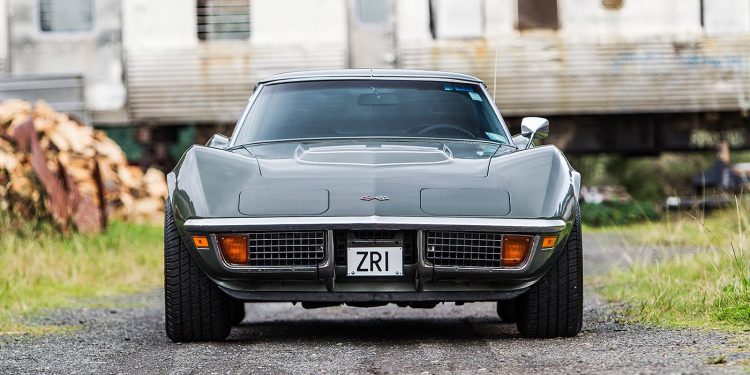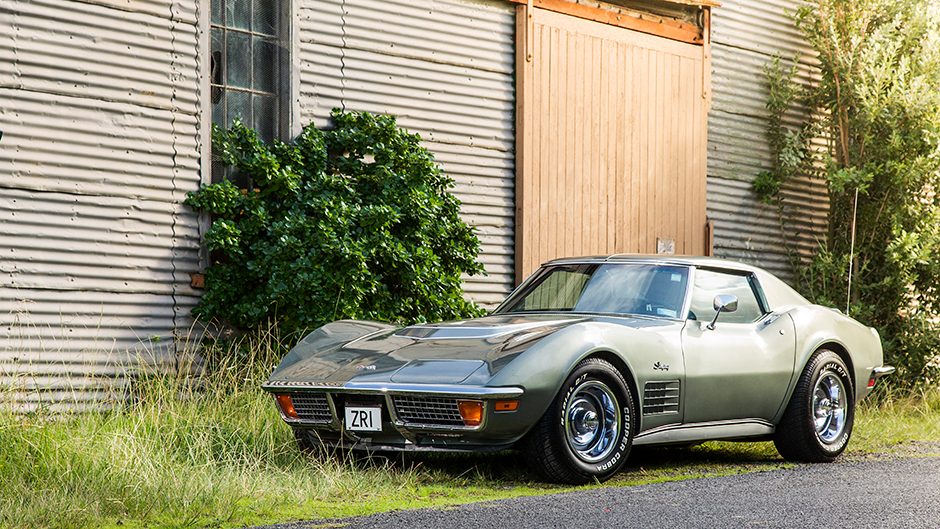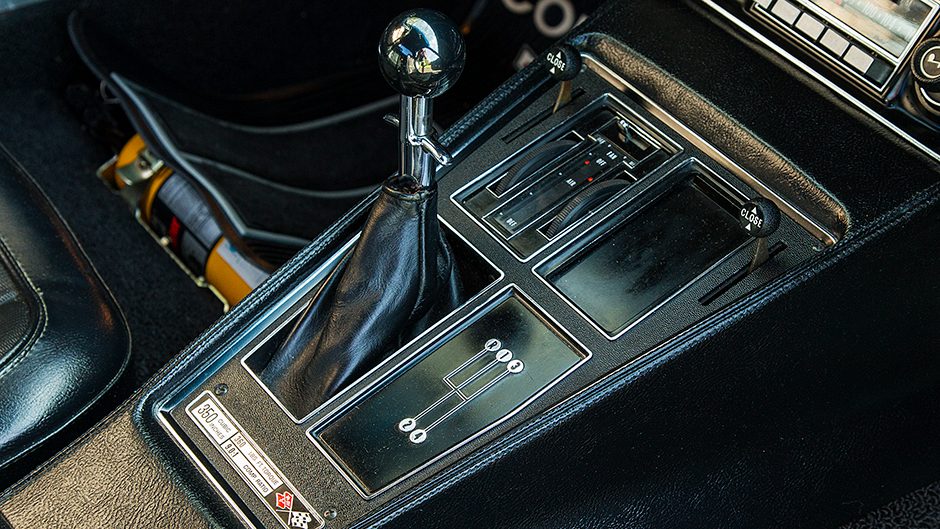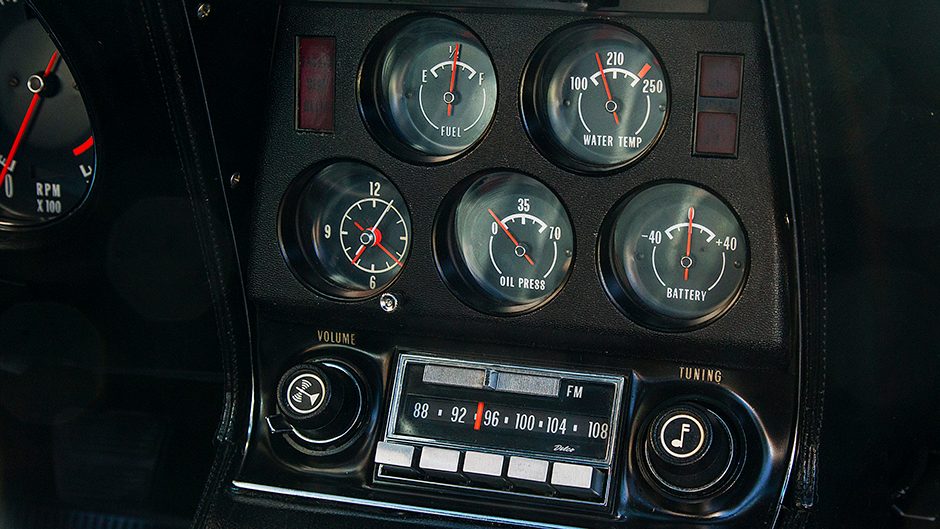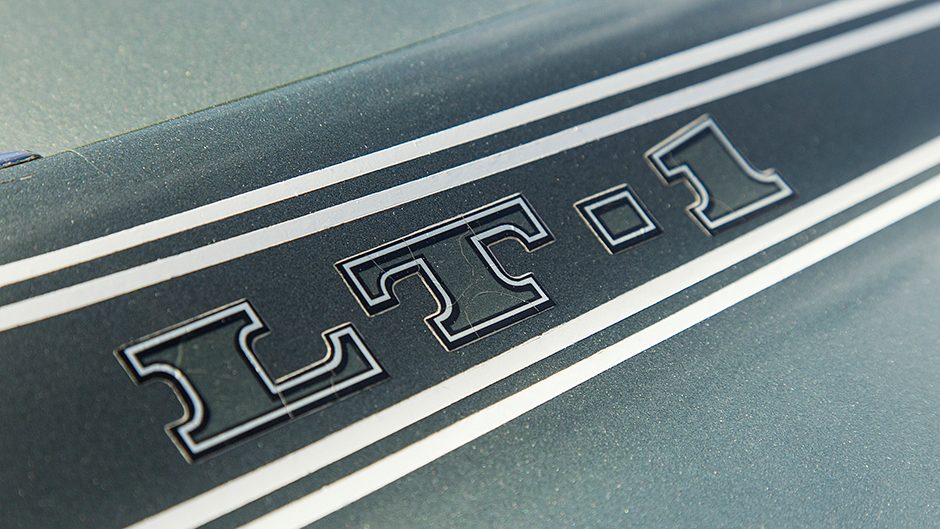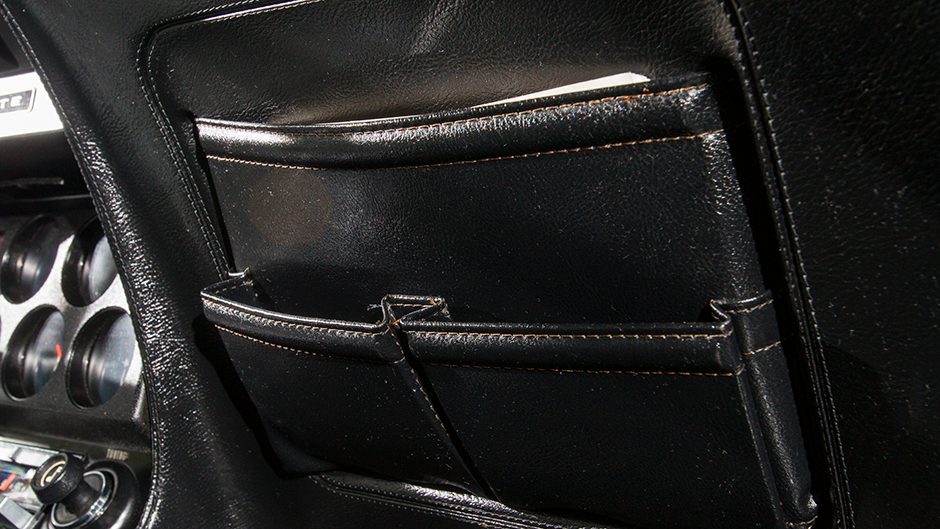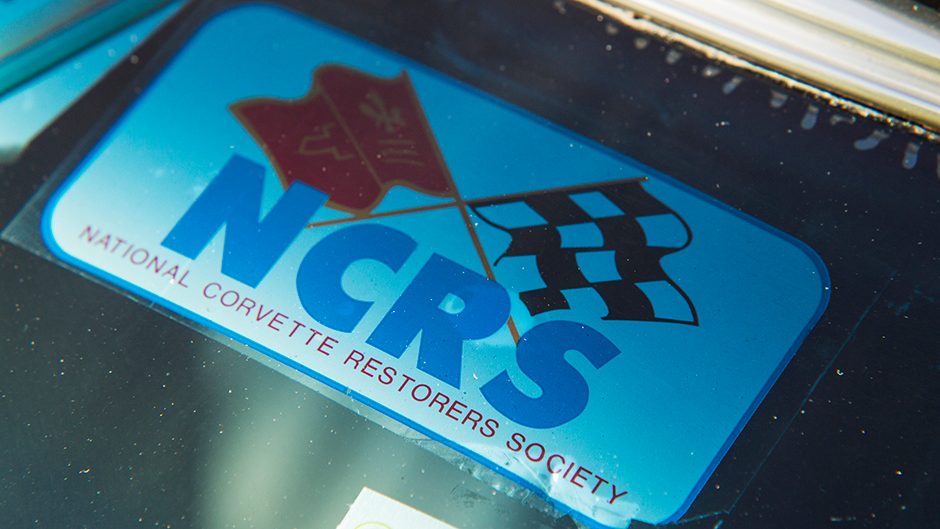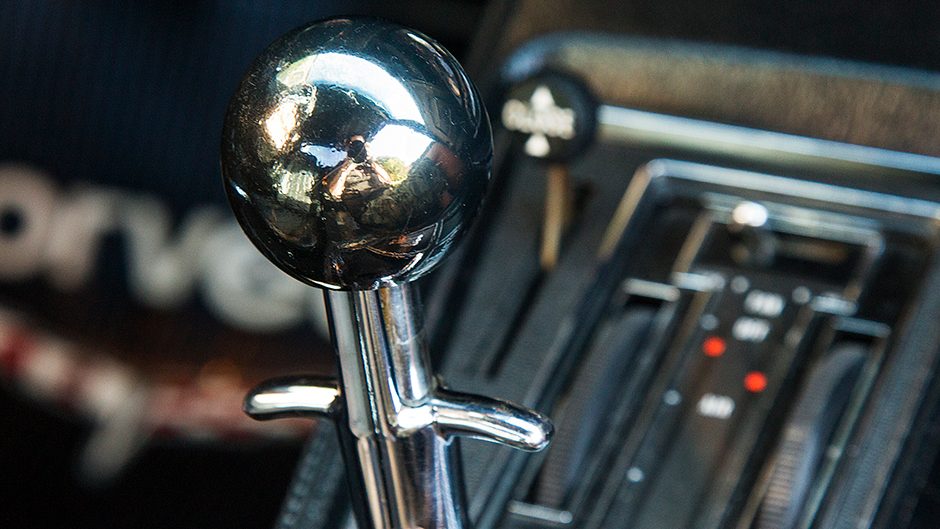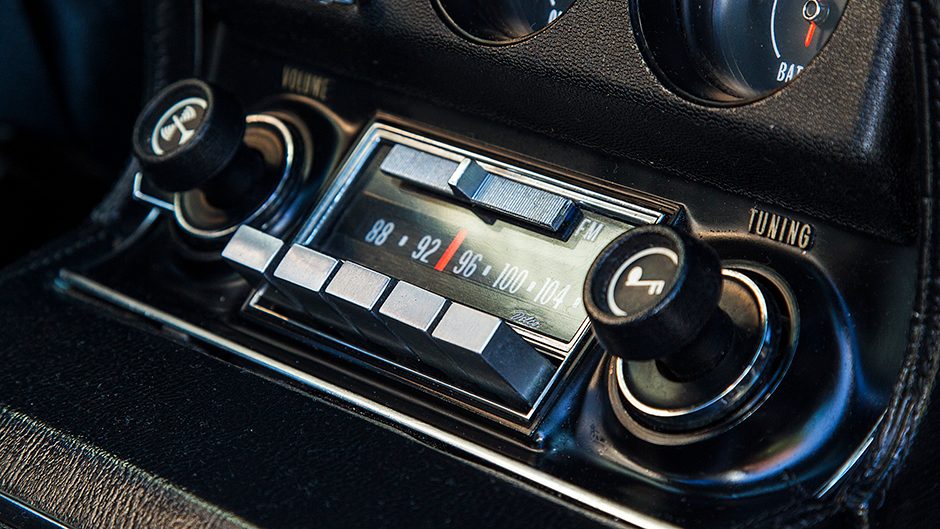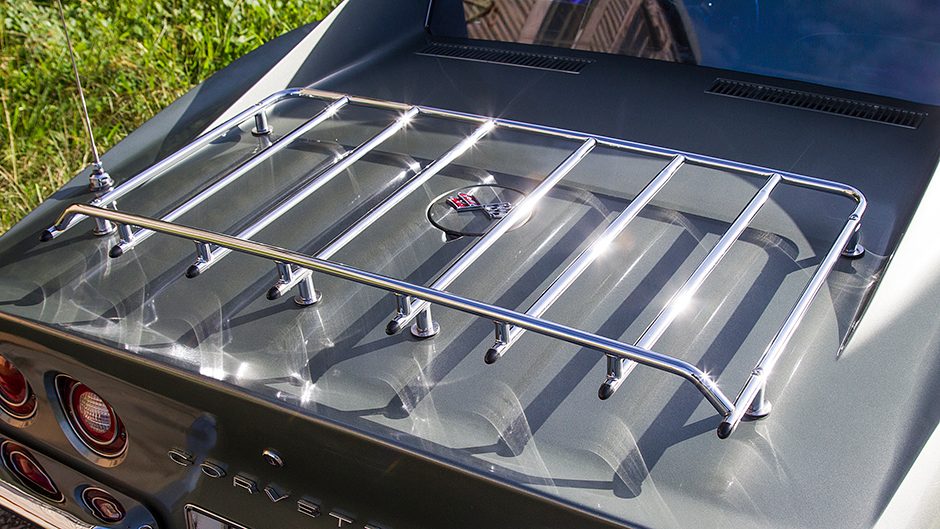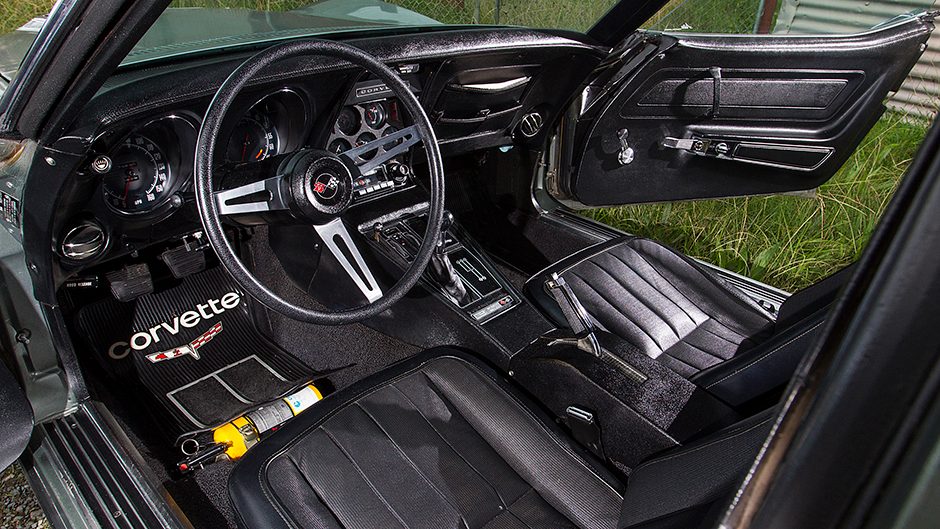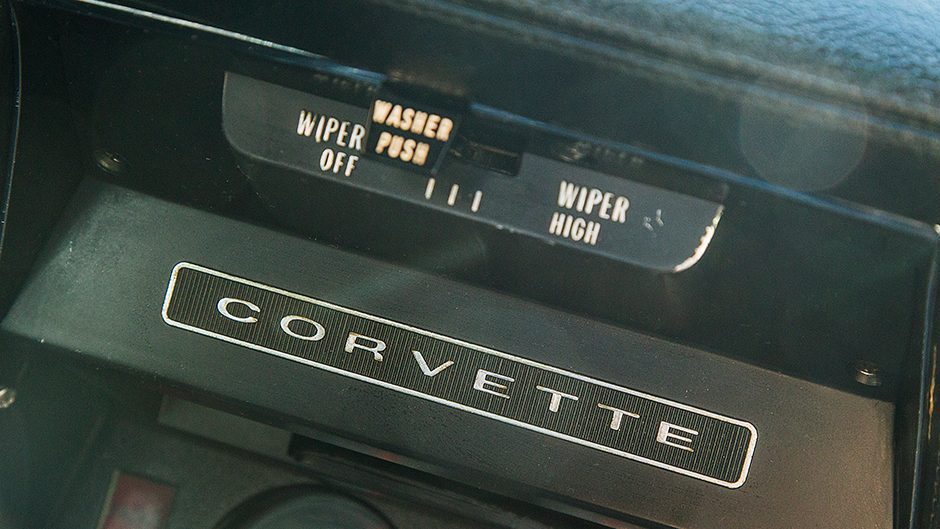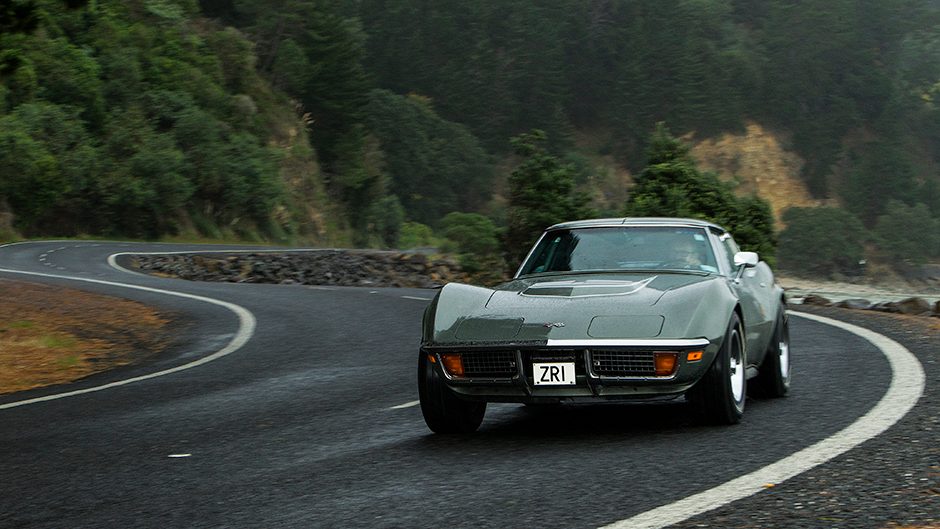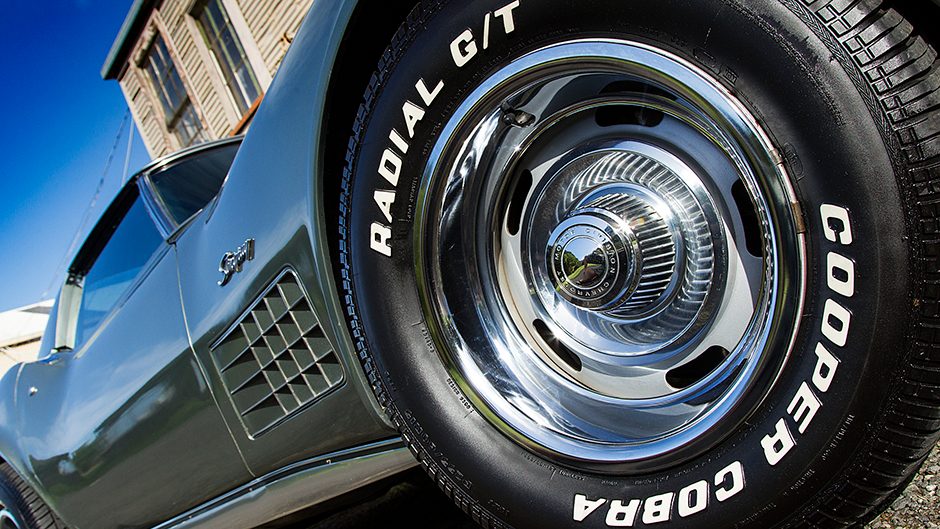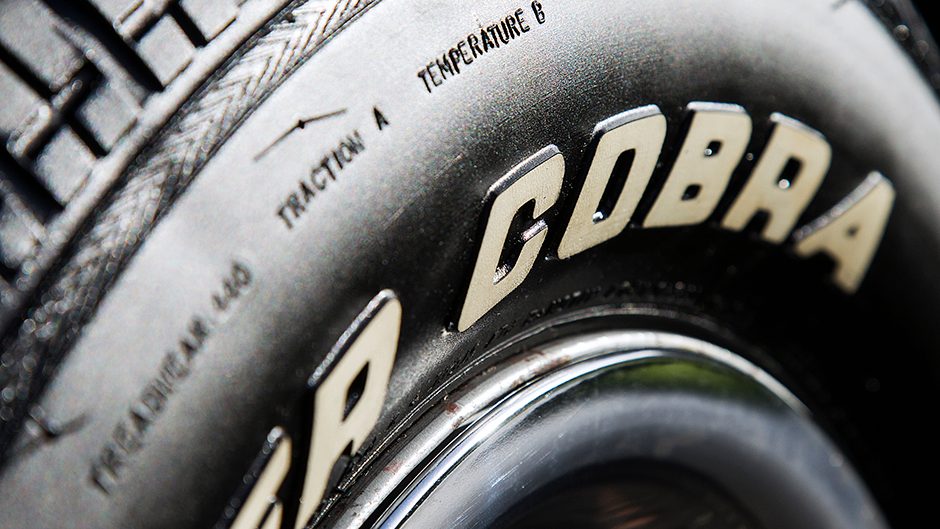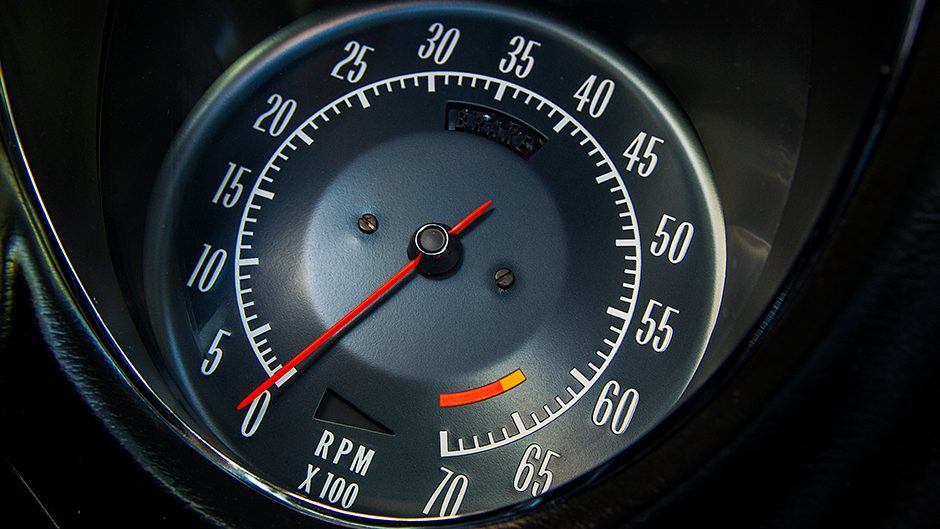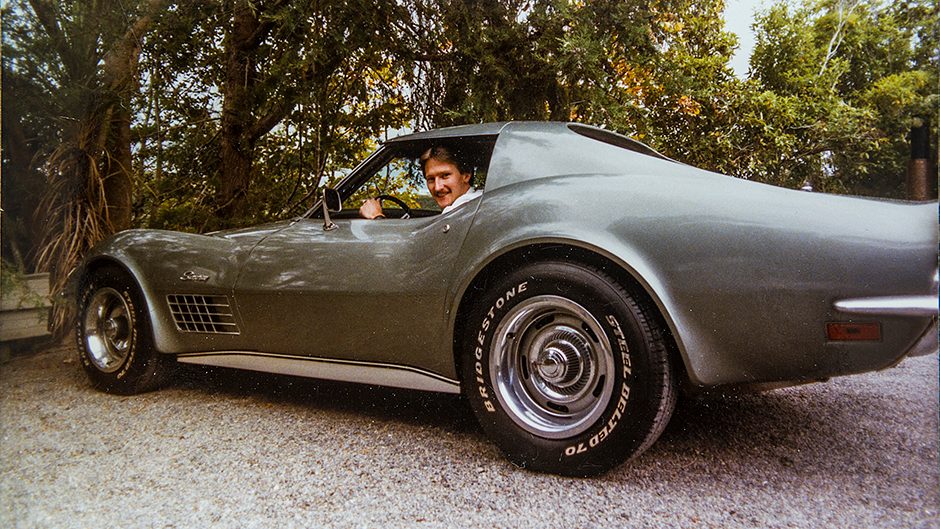1972 Corvette Stingray LT-1
Words Stu Owers | Photos Tom Gasnier
After a chance encounter, the first New Zealand owner of this American classic gets reacquainted with one of the most sought-after Corvettes of the era, the LT1.
October 1984; during a clear evening on a near deserted Wellington motorway, I let the Corvette settle calmly at 100mph. I casually asked my passenger to look over at the speedo, “That’s 100, – right?” they said. Then I stomped on the gas. The Corvette’s nose would snap up and the car would surge forward, causing my passenger to snatch at the grab handles in alarm. At 120 I’d ease their discomfort and let the car settle back to the legal limit. That was what genuine muscle cars were all about. Primitive, unrefined with a hint of danger, much like my driving at the time.
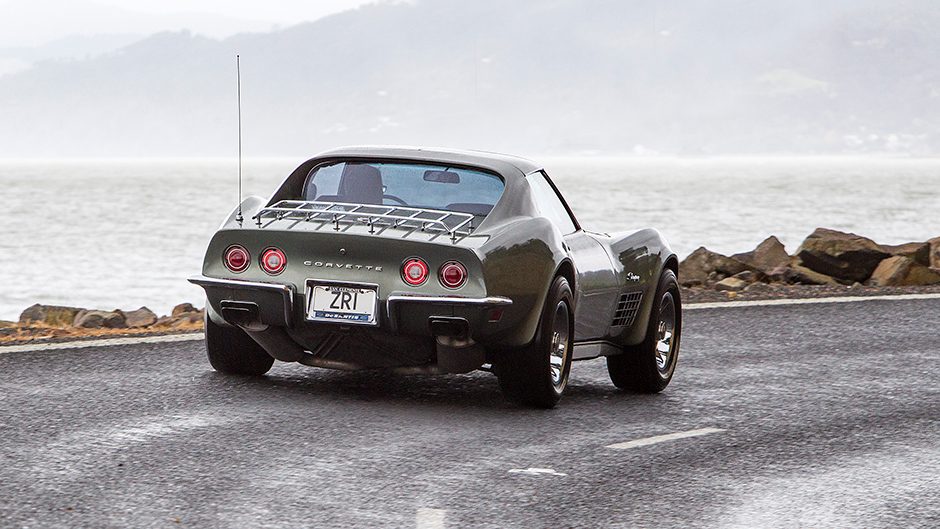
Some 18 months earlier my wife and I were living in Washington DC and I had been working in the States for nearly four years, juggling four jobs in order to pay for my racing and save enough money to buy a couple of cars to sell when we returned to New Zealand. Our Kiwi friends had been buying their first homes and were paying off their mortgages and so we needed a plan that would allow us to catch up. Back in those days, imports to NZ were heavily restricted and tightly controlled, and cars like the Corvette were rare and commanded a premium price. To land a car in 1984, we had to prove we had been living off-shore for more than two years and also declare we would keep said car for at least six months. These cars also had to be more than 10 years old to escape punitive duties. My Dad had been researching the local car market for me at home, and on his advice (sent via aerograms) it was decided that a Corvette would net a better return compared with a Mustang or Camaro.
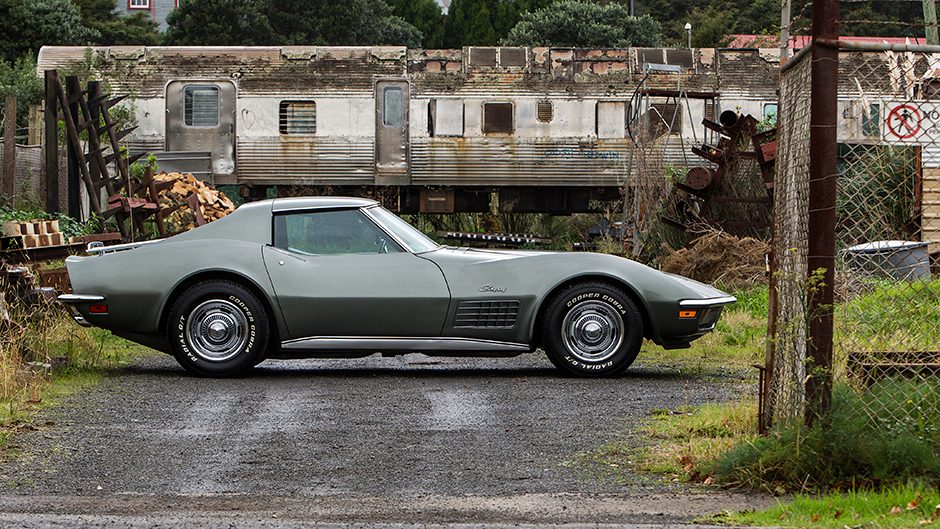
Having scraped enough money together, we bought two Corvettes to bring back, the first a ‘basic’ 1970 model with the 350 V8 and an automatic, but it was a one-owner car in great condition. The other, a 1972 LT1, turned out to be a relative rarity. This was fitted with a high-revving, performance version of the famous small block with solid lifters, a high-rise manifold, a lumpy cam and a 780cfm Holley carb all powering through a Muncie close-ratio four-speed manual. These LT1s were only fractionally slower than the 454 big block option over a quarter mile but with 45kg less iron up front, the LT1s had a superior balance and better handling. Surprisingly, when new, the LT1 was a more expensive option box to tick than the big block and this is probably why only six per cent of Corvettes sold in that era were specified as LT1s. The difference in performance and character between the LT1 V8 and our regular Corvette 350 engine was night and day, with the regular 350 being smooth and docile by comparison. I paid $US7000 for the LT1 which had 42,000 miles on the clock, all put on by its original owner. It seemed a fair price but it became obvious that it was quite a bargain. Nearly everywhere I took it someone would offer to buy it from me. It was a little rock star by American standards and it often gathered a group of admirers.
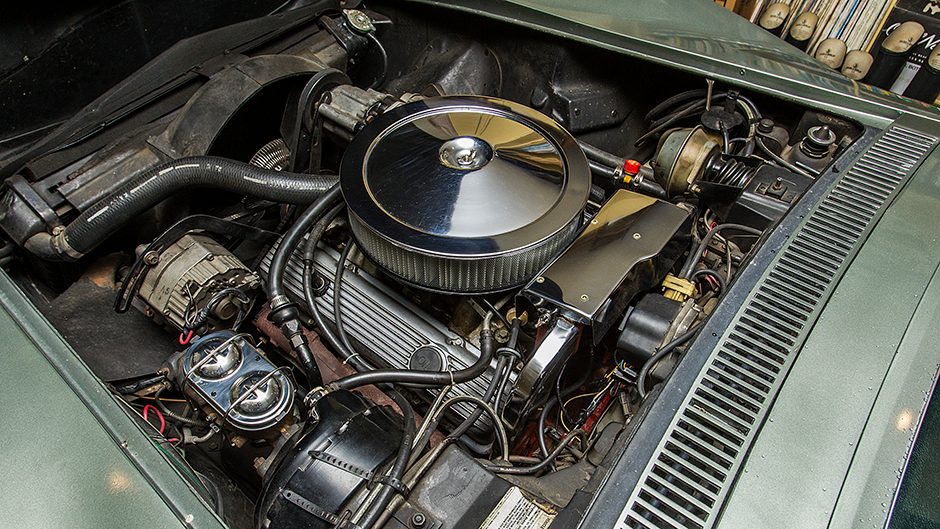
While I owned the LT1 in the States, I regularly took it to the racetrack where I was working. After hours, I’d often do a few laps chasing the other instructors around the circuit. Despite what most Kiwis think, the Corvette handled well, even though it was already a 12-year-old car. Its relatively low gearing gave it plenty of punch and the wide 15×8 wheels endowed it with stability and grip. It could do glorious power slides out of all the corners, including the very high-speed sweeper leading onto the front straight. After the cars landed safely in New Zealand, and the six month ‘ownership’ period had passed, it was time to sell the connection to our old American life. There was only a small market in NZ for these cars and when it came to the LT1, it didn’t help that most buyers were looking for the big block version. But after enduring a few tyre kickers we eventually sold it, the LT1 disappearing off to Auckland and we had the deposit for our first home.
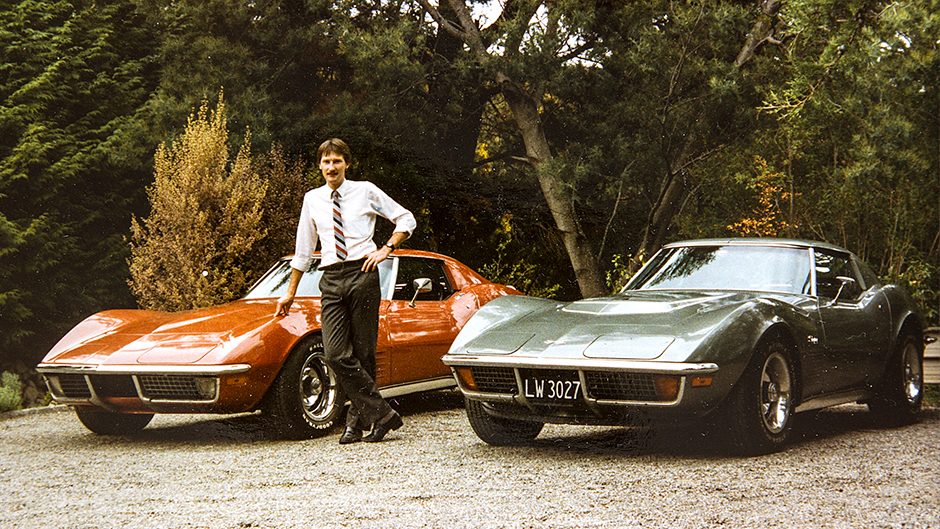
I’ve often wondered what happened to that Corvette. About a year ago I tried to track it down as I thought it would make an interesting story but alas, the trail went cold. Recently, while filling at my local gas station, I glanced up to see a Corvette rumbling onto the forecourt. I couldn’t believe my eyes. It was my old LT1. The ZR1 personalised plate it was wearing explained why I hadn’t been able to trace it. I pounced on the startled owner, Pam, who was travelling up to a Corvette convention in the Bay of Islands. She was a little suspicious at first but I gave her a few details about the car which must have convinced her I was genuine and not some raving con man. I asked her to think about a feature on the car, and (eventually) she graciously agreed to let us drive her beloved car.
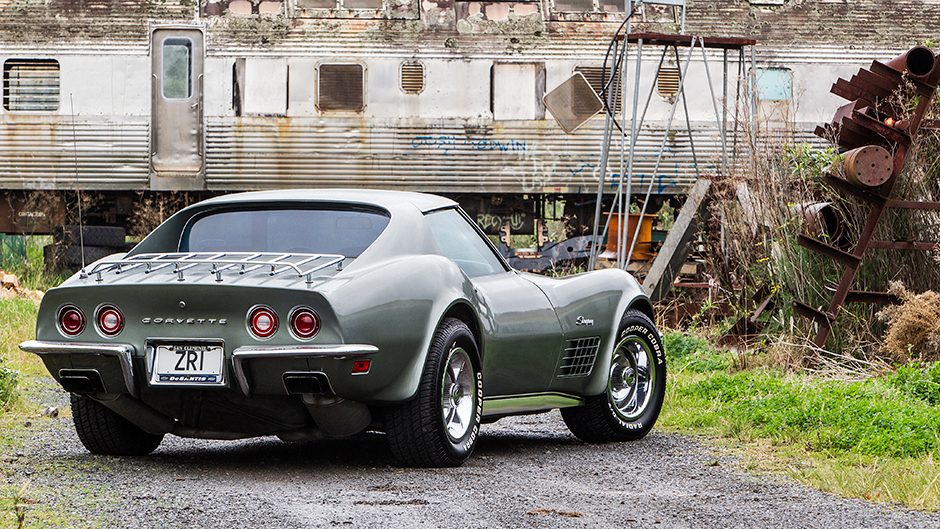
Pam is quite the motoring enthusiast. In addition to the Corvette, she has a collection of motorcycles including a couple of restored classics, all of which have covered big distances touring the country. She also owns a Toyota GT86 for daily commuting chores. Pam has owned the LT1 for 14 years and is a regular at Corvette events where it’s won numerous trophies. Nearly everything about the car is the same as I can remember it from back in 1984. It’s no ‘concours trailer queen’, but is so much more authentic and endearing with its worn originality. Remarkably, it still only has 75,000 miles on the clock, which means it has averaged only about 1000 miles each year since I first sold it.
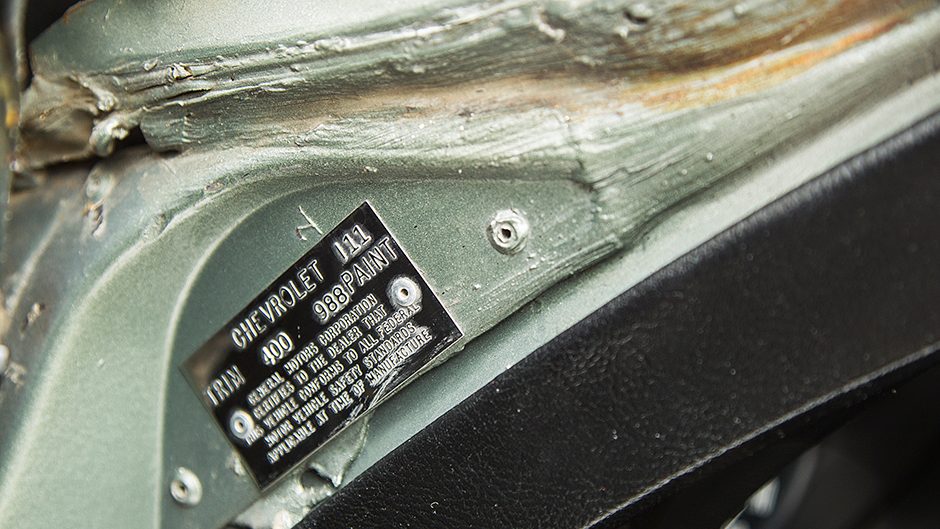
Driving the car again was a thrill. I’m rarely nervous behind the wheel of expensive exotics but this car had me on edge, such a precious, unrestored example can’t be repaired or replaced so easily when things go wrong. Pam must have been holding her breath the whole time I was behind the wheel. Come to think of it, so was I.
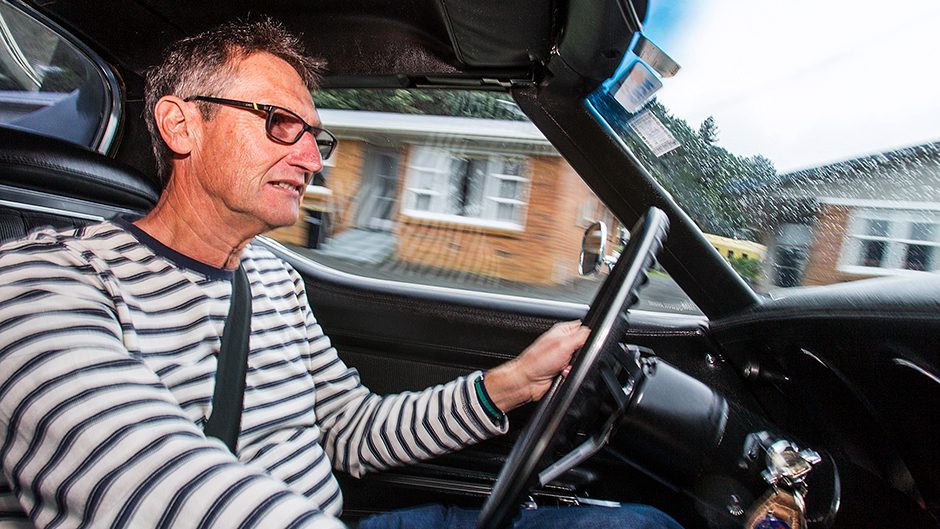
My memory of the car was accurate but I’d forgotten how skinny the rim of that big steering wheel was. The gearshift was as good as I remembered. For such a heavy-duty gearbox, the shifts are slick and easy while that polished steel shifter knob is a typical example of American machismo. You can feel the oiled mechanical precision in detail as it slots between gears. Despite all the retro coolness of the gearbox, the engine noise is the crowning feature, the sound worth the price of admission every time you prod the gas. The car starts with a slightly uneven ‘cammy’ idle but is crisply responsive to any throttle blips. On the road, there’s an initial hiss of intake noise through the big Holley carb, which is then followed by a roar as that V8 sounds off through its exhaust pipes, a tune that could be lifted straight from a movie car-chase soundtrack. The LT1 revs urgently and freely through the closely spaced gears to its 6500rpm limit, a fairly high number for a production V8 of the era. The main area where the Corvette feels dated is the steering. It’s light and direct but its recirculating ball system lets the car wander about and it needs constant corrections. The view from the driver’s seat over the big rising front guards is fabulous, making for a unique and special drive experience.
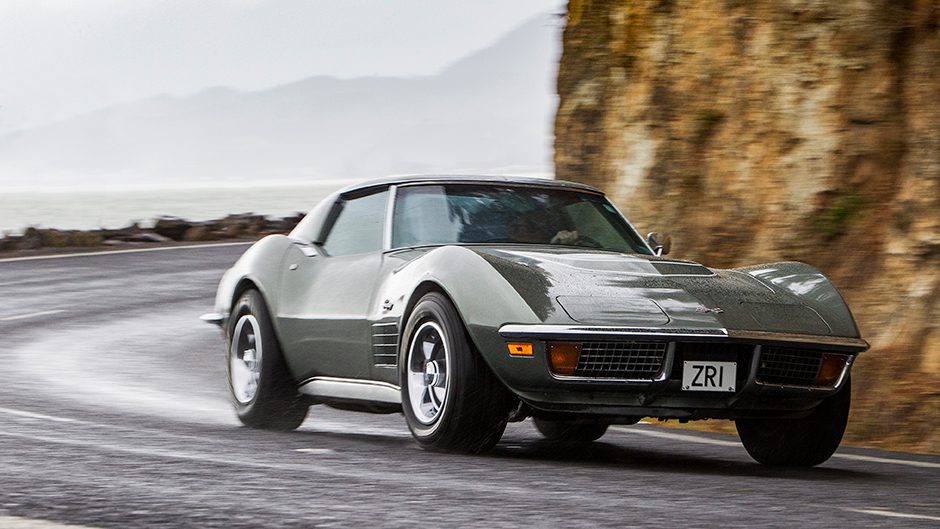
After all these years, the car still feels punchy and reasonably quick. Magazine road test data showed the LT1 was good for a low 14-second quarter mile. And those cars would have been fitted with the cross-ply tyres of the era. Undoubtedly with modern rubber that time could drop easily into the high 13-second range. While that’s not especially fast by today’s standards, measured against the considerably more expensive European exotics from the 70’s, it’s a highly respectable time. After a nostalgic morning spent driving and admiring this beautifully preserved piece of Americana, Pam generously invited Gasnier and I back to her place for lashings of homemade soup and scones. Some days are just gold. The question I asked myself before I drove this Corvette again was; would I want to own it a second time? Absolutely, even though this once youthful and supple car has become a bit fragile and cranky with age. But, then again, so have I. Endearing to some perhaps, but of course, it’s not everybody’s cup of tea, but I still like it.


